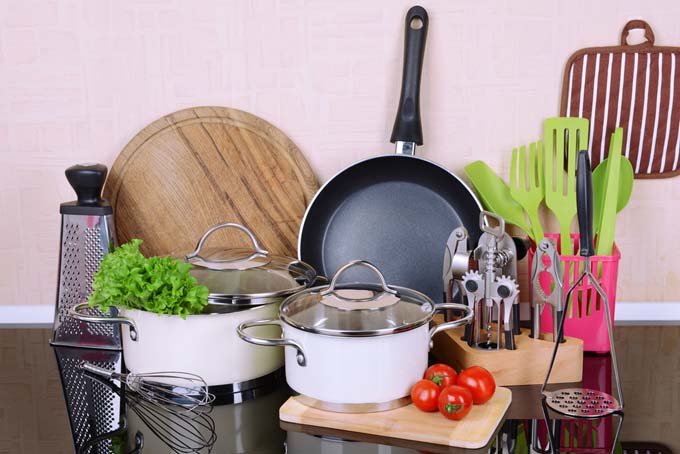If your kitchen is home to various plastic kitchenware products and you use them daily, you should be aware of their pros and cons. Plastic utensils like containers are common in every household. They are mainly used for storing food items.
And there are many benefits and drawbacks of using plastic kitchenware products. Depending on your type of usage, these kitchen items may or may not be a suitable choice for you.
Plastic-based kitchen items are cheaper and more durable, a major benefit. However, in contrast, longevity, flavor absorbency, and environmental impact are disadvantages.

Advantages Of Plastic Kitchenware Products
Plastic kitchenware products make our life easier. Since plastic kitchen items started being used in our home, we have experienced seamlessness and efficiency in our daily cooking work.
You can get these easily-available kitchen items from any bulk plastic kitchenware supplier. With this said, plastic kitchenware products offer many benefits, some of which are listed below in this article.
Durability
Plastic kitchen items are more durable than any other material. Most kitchen items made from plastic are robust and do not easily break. Moreover, They are designed to withstand light stress as well.
So, plasticware is a safer option for tiffin. For example, when you take you to commute to your workplace, your lunchbox might get thrown around in your bag. If you use a plastic airtight lunch box, you won’t have any spillage.
You can stack similarly weighted containers on top of each other without the fear of buckling them. Thicker plastic kitchen items like home-storage containers last longer than thinner ones.
Plastic kitchenware products can last more than human life. Yet, the average lifespan of plastic-made kitchen items is around twenty-five years. Furthermore, airtight plastic containers are better at preserving the flavor and freshness of food for a longer time.
Their cost is less than half
Plastic kitchen items are cheaper than other conventional storage materials like metal, glass, and wood. As a result, plastic kitchenware products are manufactured in large quantities, lowering further the cost of this material.
Food storage and containers often get damaged or misplaced in everyday use. And in this case, plastic is an ideal food storage material because the expense of replacing plastic items is lower than any material.
Cookware made of other materials than plastic costs us more than twice as much as it does now. Plus, the manufacturing cost of plastic kitchenware is much lower than any other material.
Besides being less expensive, plastic cutleries take up very little space in the kitchen and weigh less than a glass or ceramic. So it is advisable to replace as plastic kitchenware products are beneficial in many ways.
Disadvantages Of Using Plastic Kitchenware Products
We choose comfort over saving money on kitchenware products. Plastic-based kitchenware items make our lives easier, but they also have disadvantages.
Plastic has become one of the most widely spread materials due to its excessive usage and non-bio-degradable nature. Unfortunately, they also end up in our food, making it one of the most dangerous substances.
Below, we have listed some of the disadvantages of using plastic kitchenware products.
Longevity
Plastic kitchen items degrade with time. Moreover, excessive light, denting, scratching, and cracking also affect this material when you stack plastic containers with heavy goods in them for a longer period.
Plastic-based kitchen items will crack and buckle over time. For example, a glass container has a longer lifespan than a plastic-based one. If you care properly, glass-based food storage can have a long shelf-life.
Absorption of flavors occurs after a long time of storage
Plastic-based kitchenware products absorb the smell and taste of food items when stored for long. Foods with strong flavors like garlic, tomato soup, curry, and Mariana sauce tend to leave their intense smell in the container more quickly.
The smell can persist even after washing the container with soap. On the other hand, glass and metal don’t absorb flavors and are better for storing these foods.
Harmful effects on the environment and health
Plastic can also largely impact our ecosystem and health from production to usage. Plastic is not biodegradable, so it can lay after its usage, affecting nature. However, we can recycle plastic material depending on the recycling system.
Being non-biodegradable material means the earth can’t absorb this material back into the soil naturally. On the other hand, light easily breaks plastic, which eventually pollutes the soil.
Furthermore, managing and cleaning the toxicity of plastic-based items is costly. However, you can recycle or reuse your containers when they no longer serve your kitchen.
How to take care of plastic kitchenware products?
If you want to prolong the life of plastic-based kitchen items, you ought to take their proper care. Here are some tips to help you care for your plastic items.
- Do not place them near the fire.
- Do not put them under the sun
- Avoid scrubbing them with wire-scrub
- Choose dark and dry place to store them
- Wash them with mild detergent
- Replace them from time to time
Conclusion
Here we have highlighted the advantages and disadvantages of using plastic kitchenware products. However, you must first understand the effects of the long-term use of plastic-based kitchen items. And additionally, acquire good strategies to use these items in our kitchen as they need less space to fit in.

As the editor of the blog, She curate insightful content that sparks curiosity and fosters learning. With a passion for storytelling and a keen eye for detail, she strive to bring diverse perspectives and engaging narratives to readers, ensuring every piece informs, inspires, and enriches.









